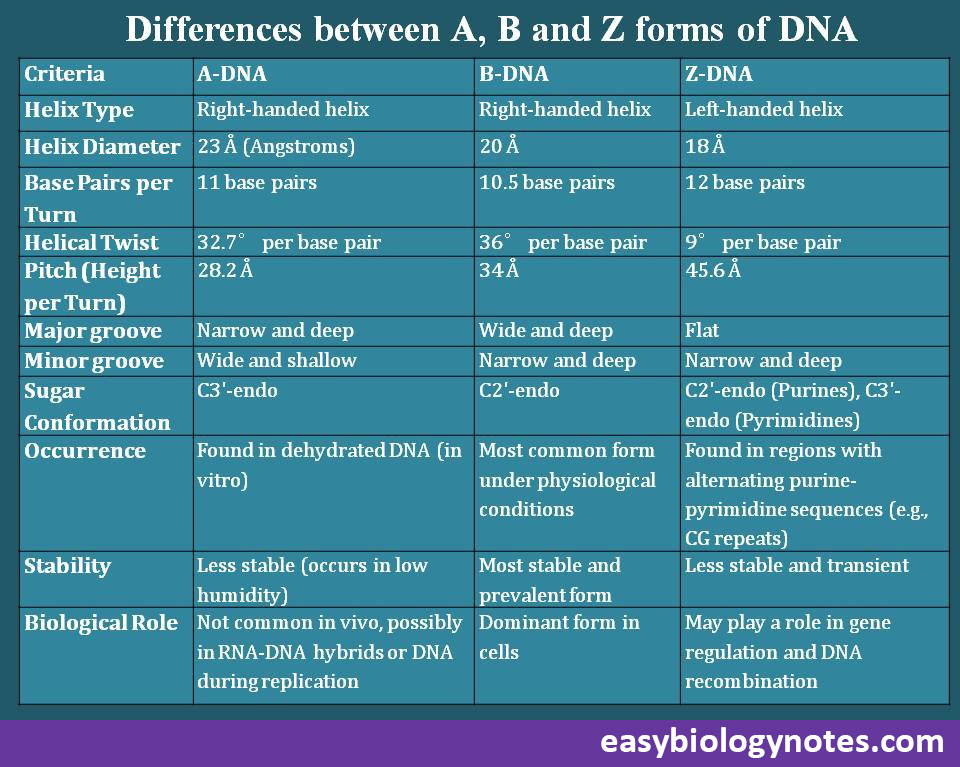Differences between A, B and Z forms of DNA
DNA exists in multiple structural conformations, of which the A, B, and Z forms are the most well-known. These forms arise due to variations in helical structure, environmental conditions, and sequence-specific factors. Each form exhibits unique properties that significantly influence DNA’s biological function, adaptability, and interactions with proteins and other molecules. Understanding these differences is essential for insights into DNA’s role in genetic regulation, stability, and evolution.
